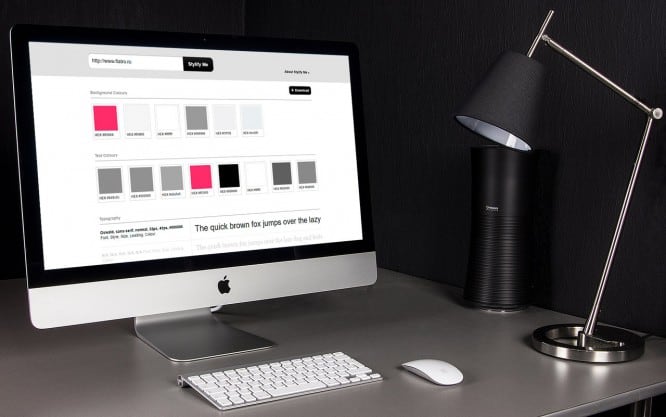How a web designer can create a professional portfolio
How a web designer can create a professional portfolio
Building a good portfolio is not only an absolutely necessary part of building a customer base, but also an essential component of getting a good robot. Building a good portfolio can be a very difficult task if you don’t know all the little tricks.
Fortunately, we know a few and we are here to teach you. Keep in mind that when we say tricks, we don’t mean “hacks” and “cheats” that will diminish your workload. These are actually “tricks” that will probably get you to do a lot more work than you intend. But don’t be upset because you can certainly do it.
You must have a professional design portfolio to get a job, but in order to have a portfolio, you must work. But before you can work, you have to show something, and here it is – a vicious circle. In order to break this cycle, you must do one thing: work for free. To get started, you need to stock up on willpower and plenty of time.
Doesn’t sound attractive, we know. But our task is to get you to do some work for free at the end of this article. So let’s dive into work.
What to include in your portfolio?
First, you need to know what to add to your portfolio and what to leave for yourself in “my documents”. A portfolio can seem like complete insanity and a showcase of nonsense if you don’t sort its content. Good design implies minimalism, and this directly deals with your work.
Imagine going to the library for five specific books. It would be ideal if all the books you need were on one shelf in a row. And you would not have to run between the rows and look for what you came for. Of course, this will never happen in the real world, but on a site, and especially a portfolio site, you can make it a reality and make life easier for your visitors.
Here are a few elements that are critical to your web design portfolio:
- Pictures that show customer service
- Links that redirect the visitor to each work, where it can be viewed in more detail and individually
- Detailed description of each work and the methodology undertaken
- Finally, you need an active link to a live site where visitors can see and experience your professional talent live.
All other information is nonsense. If you have 50 websites built on your laptop, and they are all sitting on your hard drive, then they are of no use. Dig them up from your hard drive and release them to the internet world.
Thumbnails / Pictures
Pictures, we believe, are essential because they save space and serve as a “first impression” of your portfolio. The first impression is the key to success, because no matter how much we try to deny it, we all love to discuss. Basically, what you want to do is grab the attention of users with pictures, and then draw them to the details of your work.
There are some great ways to use images, for example, take a look at the Google Chrome Web Store or iTunes.com
Showcases / Showcases
Not everyone likes show-off, but you should seriously consider this approach when creating a portfolio of your work.
Showcase the best, most impressive, and most time consuming project you’ve created. Showcase high-resolution images, brilliant interface designs, and more.
One of the most important portfolio items that is often overlooked is the showcase. Don’t underestimate this important element. Trust us, one sketch won’t prove your talent or convince someone to hire you. Give potential clients the opportunity to view your work in all its beauty. If you don’t think it will stand up to criticism, perhaps you should reconsider what you included in the showcase.
Links
One of the most overlooked, though obvious, element of any portfolio is links. Opinions are divided on this topic: some people add links to their portfolio, others miss them. We are of the opinion that excluding links from the portfolio is an unconscious mistake of the designer, otherwise who in their right mind would not leave links to their work?
How to get work experience?
Many of us do not have any experience, and nevertheless, we need it to get a new order or client. At least this is the prevailing line of our thoughts. Fortunately for designers and developers, this is not a big deal at all.
All we need is ambition. Ambition gives us everything we need. If you are a developer, then you don’t need a client to gain experience. All you need is to find a project for development, or create your own. And if you are a designer, it’s generally easy for you, just open Photoshop and start doing a useful and creative business.
Where and how to get feedback on your portfolio?
Oddly enough, the best place to get feedback is in communities. Register in VKontakte, and start participating in design communities, add them to the list of your interests. Become part of communities and connect with other designers.
Keep in mind that your portfolio won’t always have a positive review. Sometimes he will be very harsh, rude, and very wordy. You must learn to do everything if you are going to be a professional designer. You will meet many people along the way who will not like your projects and will voice their disgust, but you just need to learn how to filter information. You don’t want to ignore them completely, but you also don’t want their “good advice” to discourage you.
How do I get Recommendations?
Getting referrals is the hardest part of this whole process, and honestly, it all boils down to working with other people. The easiest way to get them is to start working with your initial clients for free, and then, based on that, they will become your first, and maybe the best, referrals.
The best way – albeit challenging – is to develop a customer relationship over the phone. It’s painfully annoying when you get a call from a client whose website you were working on crashed. But your availability at any time to help a client with his difficulties will be a key link in getting good recommendations.
Outcome
To summarize, we would like to say that the most important thing is to stay motivated. Motivation is one of the most important factors for each of us, and this is the most difficult task. Nourish your ambitions and they will help stimulate your motivation.
So if you’re hungry, ready to step into the design world and do something great, or create your own personal virtual world, then go ahead. Know you will succeed!
Source: LPgenerator
…


